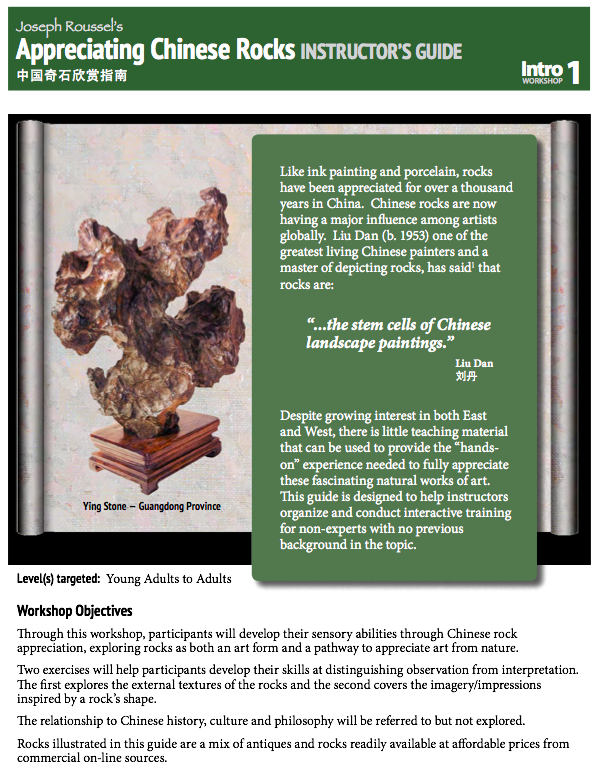Category: How to Judge a Rock
How to Judge a Rock – Shou Zhou Lou Tou (SZLT)
Shou Zhou Lou Tou (SZLT)
The great Song literati Mi Fu formed an appreciation of rocks based on his own aesthetics as well as what he knew of past collections. The four categories he considered essential to the appreciation of rocks were shou, zhou, lou, and tou. These four criteria are still used by connoisseurs today, especially for Taihu rocks.
Shou means thin and with respect to rocks, it means an elegant, slender shape, ‘vertically oriented, erect and alone’. (see Figure 1)
Zhou means wrinkles and refers to rich surface textures and furrows created from delicate intaglio lines and relief ridges that show rhythms and changes in shape. Thus a small rock can embody the topographic features of hills and mountains. (see Figure 2) In Hangzhou, the rock known as ‘Wrinkling Cloud Peak’ combines both shou and zhou. (see Figure B)
Lou means channels and other types of indentations that lend an exquisite beauty to rocks. These channels are linked to one another as if a path were unfolding itself through the rock. (see Figure 3)
Tou means holes and openness. Air and moonlight can pass through such openings. (see Figure 4) In Shanghai, the rock known as ‘Exquisite Jade’ combines both lou and tou. (see Figure A)
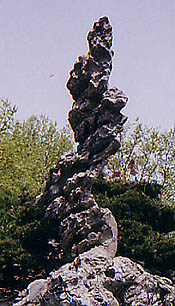
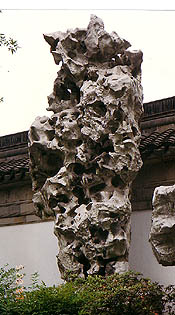
Figure A – ‘Equisite Jade’ Figure B – ‘Wrinkling Cloud Peak’
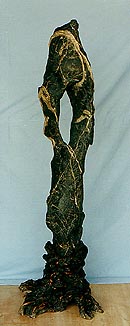
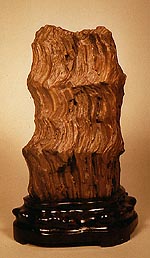
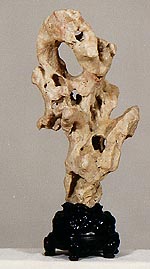
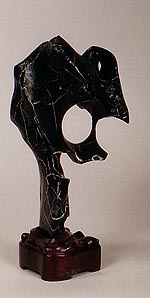
Figure 1 Figure 2 Figure 3 Figure 4
How to Judge a Rock – Shape, Material, Color, Spirit
Shape, Material, Color, Spirit
Although Mi Fu’s four categories are well-suited for describing Taihu Rocks, they are not comprehensive enough, and with the appearance of newer gongshi types, modern connoisseurs generally apply another set of criteria for judging rocks. These four are shape (xing), material (zhi), color (se), and spirit (shen).
Shape (xing)
The first consideration for a rock is that it should be naturally shaped. Display rocks can then be divided into two groups: abstract and representational. The former gives more room for the imagination and are admired by many people. But rock lovers also appreciate representational rocks which can be subdivided into those representing landscape and those representing particular objects. Landscape representational rocks resemble hills, scenes after snow, cliffs and peaks. They can be further subdivided into those representing near or far distant scenes. The latter should exhibit proportion between height and width to give a proper framework for the vista represented. Rocks resembling particular objects, such as human figures and animals may either bear such likeness in shape or spirit. The merit of the latter is that they both resemble and yet do not resemble a given object.
Zibowen Stone
Wen rocks are found in Zibo, Shandong province. They are decayed rocks composed of lime, granite or clay stone. Aesthetically wen rocks have a naturalness and antique simplicity. They have a weathered look with dots or crossing lines on the surface and a variety of wrinkled forms. Among this type are aragonite rocks which are usually black and very hard. Wen rocks portray a feeling of “pu.”
